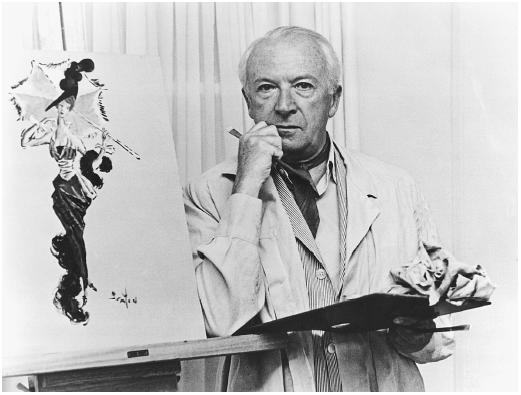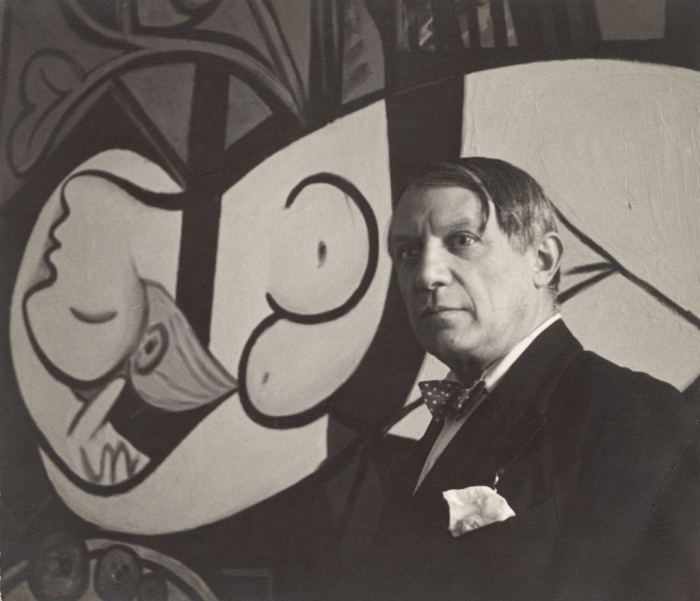–
Cecil Beaton will always be remembered for his huge influence on the world of photography and fashion. His incredible works personified elegance and grace– but his personal behavior was at times, anything but. He was not known to be a loyal friend, a humble talent or a genuine soul of any sort. In fact, his persona and image was a self-creation– fabricated with great calculation to gain him access to the world that was just beyond his reach.
When obsessive vanity, insecurity and posturing are the guiding forces that propel you forward, it can be anything but attractive.
___________________________________________________________________________
–
–
From The Times–
Everybody loved Cecil, the photographer Louise Dahl-Wolfe, who worked for Harper’s Bazaar, told me. “He was such a naughty man. You had to laugh at all the awful things he said about everybody, especially the people at Vogue.” In fact, this most preciously balanced man laughed at everybody except himself – for whom he reserved his deep wells of compassion and self-pity. As the man described by his on-off friend Truman Capote as a “total self-creation”, he knew that the business of being Cecil was no laughing matter, but something that needed serious application for the success he had always craved.
And the proof of that success is the influence he has had over so many younger photographers since his death 29 years ago. Mario Testino, who has captured modern society and fashion as variously as Beaton did, speaks for many when he says: “He marked his period as if he were the only photographer around.” Another of today’s most celebrated fashion photographers, Nick Knight, praises his work “for its grace and elegance. From the touching and funny pictures of his sisters and the delicately fragile poses of his photographs of society beauties, as if they were made of porcelain, to the memorable wartime images, he was always sensitive and poetic.”
–
–
So, what was the essence of Beatonism? He was a born outsider; posh but not quite posh enough – his family’s wealth was based on trade. Well educated – but at Harrow, not Eton. Cambridge, not Oxford. Clever but not intellectual. Good-looking but not quite handsome. He just failed to make the grade in those things that he considered mattered. Vain – he had his clothes made one size too small to flatter his already slim figure – but never glamorous, despite an international lifestyle that brought him into contact with everyone who “mattered” for more than 50 years.
But he had a burning desire to leap the fence and browse the green fields of aristocratic privilege, still going strong in the Twenties and Thirties. Beaton was what was known at the time as a pansy. With eyes trained on the British upper classes and American plutocrats, his tendencies could have been a disadvantage, but he capitalised on them by aiming not at the men, but at their wives.
–
–
And the tool this most vulnerable of men, described by Cocteau as “Malice in Wonderland”, used for unlocking the doors of privilege was portrait photography. He quickly learnt that portraiture was all about flattery. He made horse-faced duchesses from the shires and granite-jawed daughters of railroad tycoons look younger, more beautiful and refined. As Dahl-Wolfe said: “Cecil was very bold. He thought nothing of slicing inches off a sitter’s waist if he thought it would please and lead to other commissions. He told me he had realised at the very beginning that this was the way to make the grade. But I think he was unfair to himself. He was a very good photographer but he was always too keen to flatter and please.” Then, having flattered their bodies, he flattered their egos by placing them in settings reflecting the latest artistic movements.
His studio was kept busy working on the photographic plates – lifting droopy eyelids, tightening sagging jaws and whittling down figures until they looked like those of girls. And none of his sitters ever complained, any more than the men who paid the bills. And why should they? Beaton was a very clever photographer whose early portraits reflected continental art movements in his use of mirrors, torn paper, fragments of classical sculpture and even Cellophane to create a surreal fantasy that would automatically make his sitters look much more interesting than they usually were. They were as flattered culturally as they were physically, even if they had no idea that the original ideas were taken from the work of Cocteau, Bakst or Dalí.
–

Cecil Beaton photograhing Audrey Hepburn for My Fair Lady, for which he was also the costume designer.
–
The next step in the carefully crafted ascent of Cecil was to enter the fashion world, an easy task for a man who knew everybody in London society. He had started young, making connections through his sister, who had done the season as a debutante. Like other men of his type – Quentin Crisp, for example – Beaton had a natural affinity for fashion and could spot by a glance at the cut of a shoulder which Paris fashion house a garment had come from. In time, Beaton became a world expert on fashion history and aesthetics. When he persuaded the V&A to mount the world’s first fashion exhibition in a major museum, he could call on favours to such an extent that the clothes he was given became the basis of the V&A’s permanent collection – one of the best in the world.
Beaton was born to work for Vogue and most of his life as a fashion photographer was spent shuttling between its American and British editions, photographing socialites, stars and celebrities; shooting fashion stories; and writing and illustrating reports of fashion shows, social events and royal occasions. Although his writing was often a mannered mix of the precious and the breathlessly snobby, his drawings often had a subversive wit to them, proving that, like many outsiders on the make, he was not nearly as enamoured of the people with whom he mixed as he pretended in public. In George Weidenfeld’s comment – worthy of Beaton himself – “he would happily have witnessed their execution as long as he was given a good enough seat.”
–
–
By the mid 1930s, Beaton had arrived. His work was in great demand and although not especially technically adept, had begun to build up a portfolio that stands today as a sophisticated and elegant record of the interwar years. He was always more at ease photographing women – possibly because many men, including the dukes of Gloucester and Edinburgh, found his effeminacy and make-up difficult to take. He was happy though when his lens was trained on the actors, musicians and authors such as Gielgud, Walton and Huxley, whom he so admired. His greatest failure, in his own eyes, was not capturing Churchill – of whom he was clearly terrified – during the war years.
Although no Brassai or Cartier-Bresson, Beaton’s flattering, even fawning, determination to make women look romantic brought him to the attention of the Palace at the time of the Abdication crisis, when the Royal Family realised that it needed a public relations exercise. The new King, George VI, stammered and was ill at ease in public. It was obvious that public focus would have to be on the Queen. Who better to direct it than Cecil Beaton?
–
–
It wasn’t easy. Wallis Simpson was an internationally renowned fashion figure. Beaton had photographed her wedding to the Duke of Windsor for American Vogue. He appeared to be a friend of both, although that did not stop him saying of the Duchess after the Duke’s death: “What will happen to her is of no interest. She should live at the Ritz, deaf and a bit gaga.” No sentiment with Cecil once people had outgrown their usefulness.
The new Queen, later Queen Elizabeth,the Queen Mother, was not an elegant, let alone internationally fashionable, figure. Simpson, when asked after the Abdication what the new Queen could do to help British fashion, had apparently replied “Stay at home”. It was Beaton’s job, along with the royal couturier Norman Hartnell, to change this perception. The Thirties fashion mood was one of brittle sophistication. The figure was that of a boy. The Queen, although not fat, was not pin-thin. The solution was to turn her into a Christmas-tree fairy Gloriana – a look given its first outing during the state visit to France in 1939. Beaton’s photographs of her looking regal, romantic and pretty were a triumph.
–
–
He was made. The final brick was in place and he found that the edifice he had built for himself enabled him to do whatever he wished, including in his later diaries biting the hand that had fed him for 30-odd years.
The Queen Mother, who used to dine with him at his own home – a rare honour – he described once as “so naturally affected” as she came “mincing into a room”, a classic kettle and pot comment. The Queen fared little better: “She would make an extremely good hospital nurse or nanny.” Princess Anne? “A bossy, unattractive, gallumphing girl.” Princess Margaret wore her hair “scraped back like a seaside landlady.” These are cruel comments by any standards, especially since the Royal Family had been so helpful to his ascent. The young pansy had, only too clearly, become the vitriolic old queen, who found it difficult to acknowledge loyalty or allegiance to anyone.
–

The late, great Cecil Beaton
–
For the last 30 years before his death in 1980 he was at the centre of the creative world: royal photographer, designer of sets and costumes from Oscar Wilde’s comedies to My Fair Lady, a chronicler of showbiz from Audrey Hepburn to Mick Jagger (for whose looks Beaton had a passion). Cyril Connolly dubbed him “Rip-van-With-it”. And he kept his diaries, noting down everything and revealing the true Cecil Beaton, a mixture of insight, petulance and snobbery, much like the world in which he lived, which will make them compulsive reading for sociologists and historians for many years ahead. Above all, they reveal the other thing that I suspect in his innermost heart he never forgot: those who are born outsiders must always remain outsiders, where they can see things most clearly.
The Cecil Beaton retrospective is at Chris Beetles, London SW1, from April 22 to May 16 (www.chrisbeetles.com)
Click here for Photos of Cecil Beaton
–






Pingback: Cecil Beaton | The Randy Dandy of Photography & Fashion
One of the true greats.
Love the photo of Marilyn Monroe.
Bitchiness is surely part of the job description in the world’s of fashion and theater so it’s hard to fault Beaton who was a huge success in both these environments for possessing this quality. He also had considerable talent as both a photographer and costume/set designer. No one did neo Edwardian better than Cecil Beaton. Take a look at the movies The Prince and The Showgirl or The Doctor’s Dilemma if you want to see what I mean. It’s also fair to say he was often fond of his “women” even if could see their flaws. All his earlier diaries are heavily edited by himself so need to be taken with a pinch of salt but the ones for 1970-80 are the authentic article and vastly entertaining since he missed nothing, had a great eye and was a competent stylist.